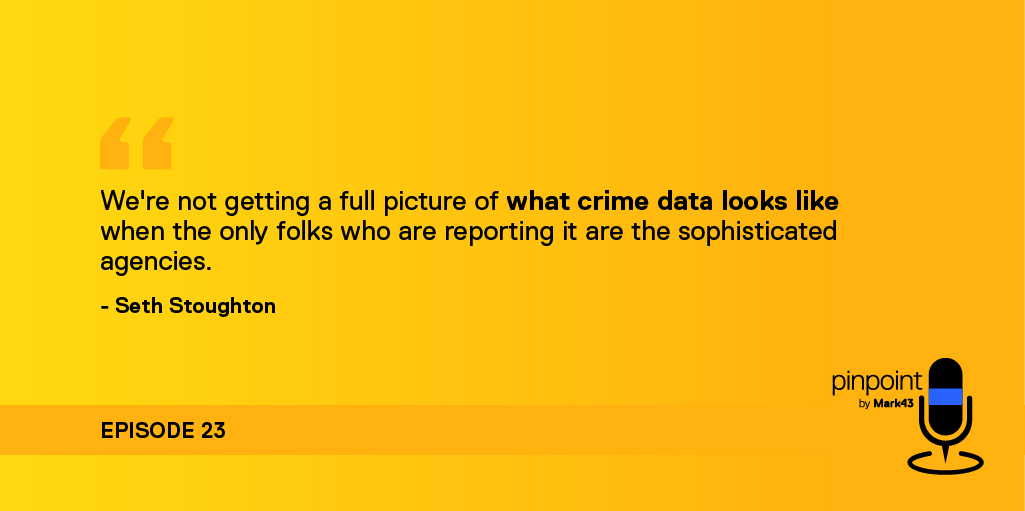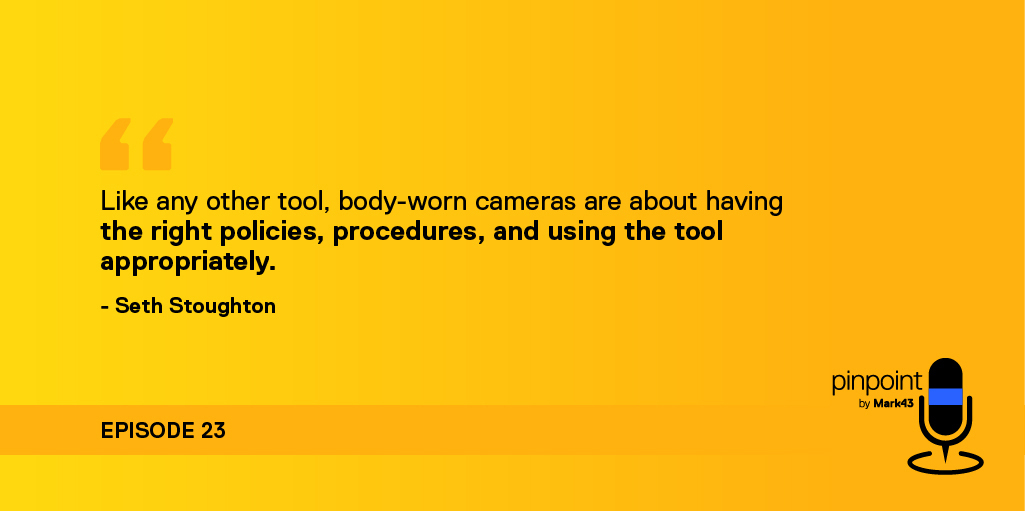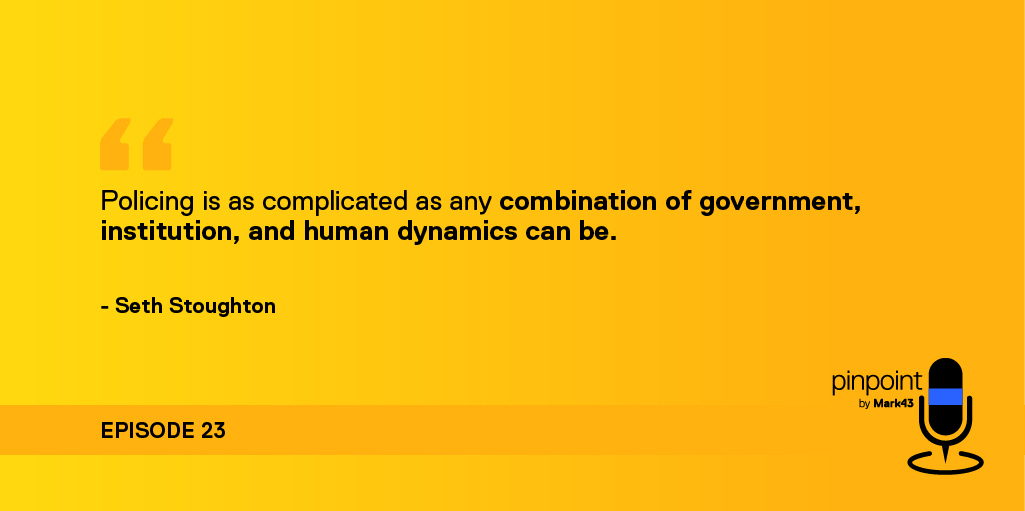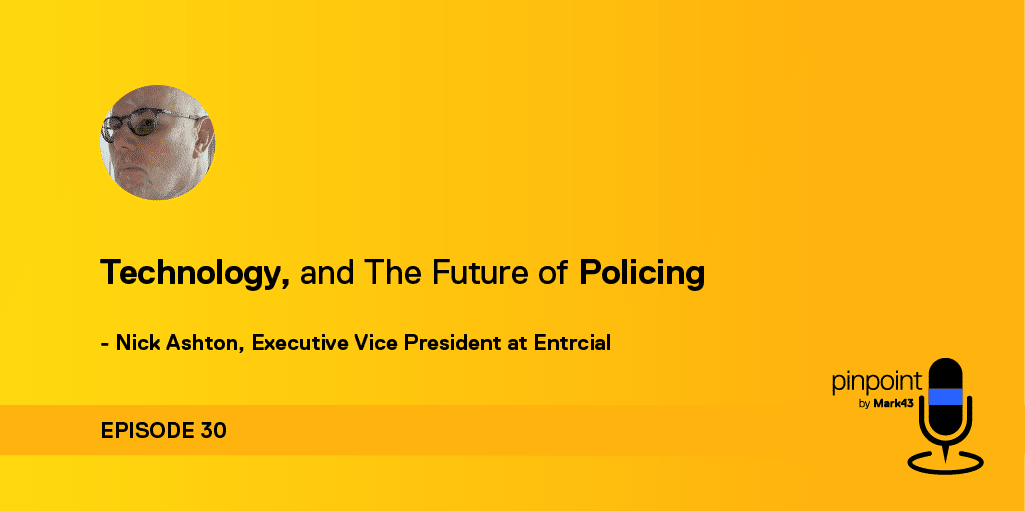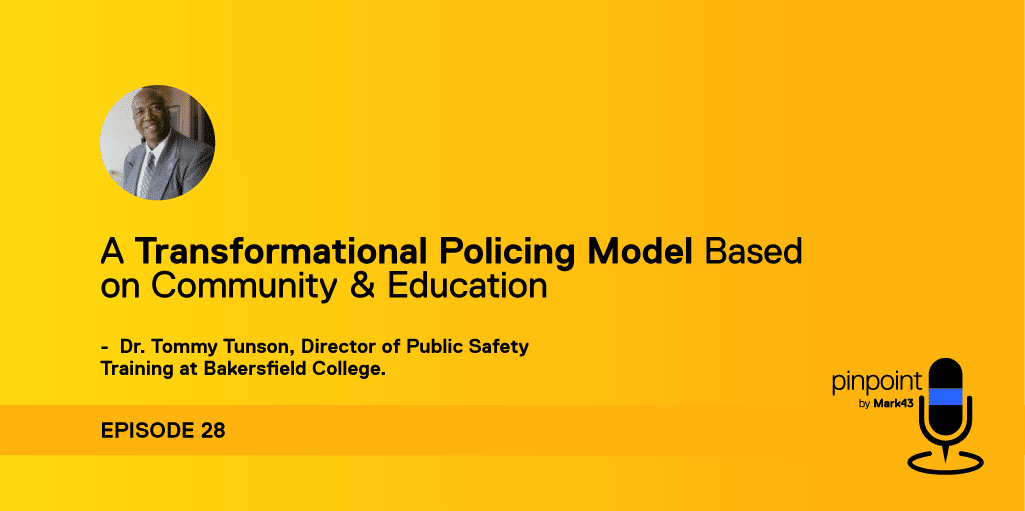Ep 23: Police Violence and Accountability w/ Seth Stoughton
Kristen Goode | 16 June 2020 | 4 minute read
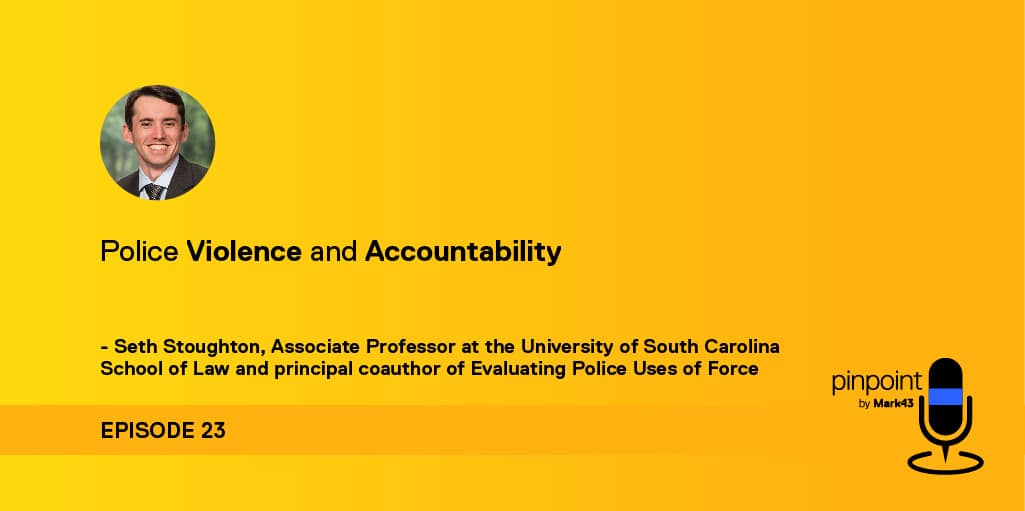
Police leadership may view a legal use of force as upholding policy and the role of policing.
Community members may consider it to be disproportionate.
With 18,000 agencies in the United States, there can be starkly diverse perspectives about the same instance of a use of force.
I had the chance to interview Seth Stoughton, Associate Professor at the University of South Carolina School of Law and principal coauthor of Evaluating Police Uses of Force forthcoming from NYU Press.
“I was suckered into a career in law enforcement,” Seth joked. After volunteering in crime prevention services, he worked full-time in law enforcement while finishing his undergraduate degree under the impression that this level of work was easily attainable.
(function() { var qs, js, q, s, d = document, gi = d.getElementById, ce = d.createElement, gt = d.getElementsByTagName, id = 'soun_der', b = 'https://embed.sounder.fm'; if (!gi.call(d, id)) { js = ce.call(d, 'script'); js.id = id; js.src = b + '/embed.js'; q = gt.call(d, 'script')[0]; q.parentNode.insertBefore(js, q);}})();
In his 2015 Atlantic article on law enforcement policy reform, Seth argued that changes in policing culture alone won’t be enough to address community and agency tensions.
Since then, he’s seen some promising trends in the information data and the evidence based approach. “I haven’t seen the broad adoption and universal agreement with my ideas that of course I would like to see, but within the last five years there has been an increased emphasis on evidence-based policing,” he said.
“We’re taking baby steps in the right direction toward gathering reliable data and information, but it still isn’t the foundation of a lot of public policy,” he added.
A panacea for public safety
Anything touted as a panacea, like NIBRS from the FBI, makes Seth skeptical. “One of the huge problems is simply the way that criminal justice and law enforcement are structured in the United States,” he pointed out.
The lack of centralization and the hyperlocalization means that there are 18,000 agencies contributing information. Even at 50% compliance, NIBRS or the UCR program would still be missing 9,000 agencies.
“I don’t have a lot of hope or optimism for a purely centralized federal approach that doesn’t push states to adopt state level requirements,” he said. If states tie data reporting compliance to funding, that would truly prioritize collecting the technical specifications.
A further complication is the vast number of small agencies. “About half of the police agencies in the country have less than 10 officers,” he pointed out—often without any administrative staff.
The localism problem is a difficult one, possibly one without any right answers, Seth said. “How much local control is appropriate? How much state level control is appropriate? Reasonable people can disagree about that.”
Body-worn cameras
Seth has written academic papers and news articles on the pros and cons of body-worn cameras in the last 10 years. “Body-worn cameras are super interesting because of the speed with which they’ve been adopted in the industry,” Seth said.
He views them as useful tools — provided an agency is deliberate and realistic about their value.
Body-worn cameras have been useful in a number of ways:
- Provided relevant evidence in prosecutions
- Offered accountability for officers
- Built public trust and goodwill
“Just having the tool is not the important part,” Seth said.
Body-worn cameras have great potential to provide even more use in the future, if the parameters of use become more narrowly defined. Seth imagined, for instance, the application of a behavioral analytic program running in real time on the strength of a million videos of use of force situations.
“I’m excited to see where that goes, but we need to be very cautious about what we actually get out of the cameras and about the concerns that cameras bring with regard to over surveillance and inappropriate monitoring,” he said.
Use of force
Seth’s forthcoming publication evaluating police uses of force is relevant to ongoing discussions about police violence and police accountability.
“The use of force really has an outsized impact on policing as a whole,” Seth said. It influences public perceptions, how officers are trained and equipped, and the way agencies are organized.
Of the 10 most violent and destructive riots in the history of the United States, half relate to perceived police abuses — in other words, to perceived excessive force incidents.
“What my coauthors and I saw as we were looking into this area was a lot of confusion, error, and misunderstanding about how the use of force is properly evaluated,” he added. A lawful use of force might be within policy to police leaders and seem disproportionate to community members, for example.
“If you were looking for a simple answer, you’re in the wrong field,” Seth said.
Actionable improvements?
- Better metrics emphasizing quality rather than quantity
- Better investment in public safety infrastructure
- Better definition for what policing is
“I teach a police law and policy class, and the first question that I pose to my students and one that sort of lasts as a theme across the entire semester is What is policing?” Seth said.
What is it supposed to do?
What is it supposed to be?
What are officers supposed to do?
How are they supposed to do it?
Over time, the end goal of policing shifted from making communities happy to enforcing criminal law. “As we, I hope, broaden our investment of public safety infrastructure, we should be thinking about whether police should be responding at all, and if so, where should it be?” Seth said.
Get in touch with Seth on Twitter @policlawprof, read his articles on SSRN, or email him at swstough@law.sc.edu.
This blog post was taken from a Pinpoint podcast interview with Professor Seth W. Stoughton of the University of South Carolina School of Law.
For every episode, click here. Or, for Apple Podcasts users, you can also use this link.


